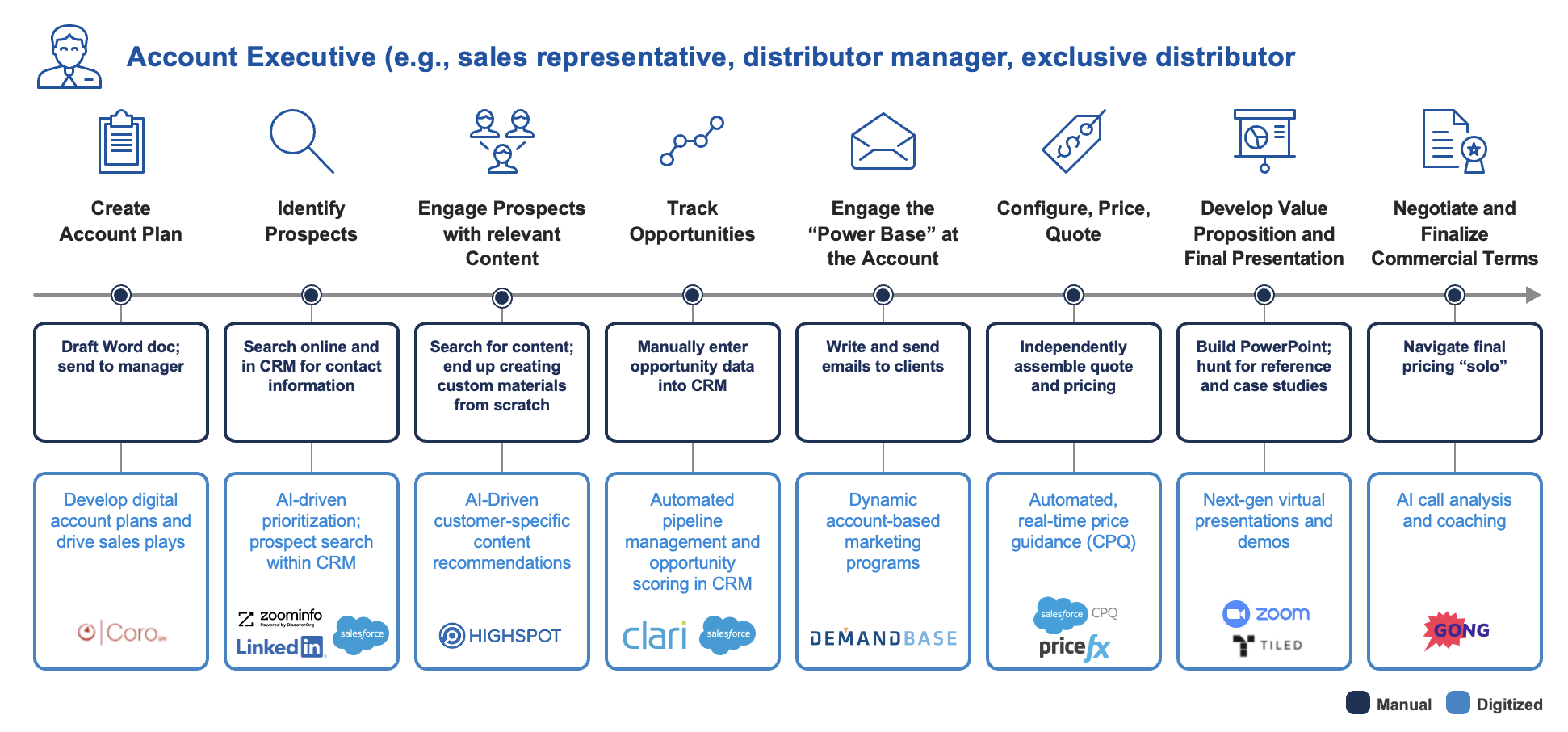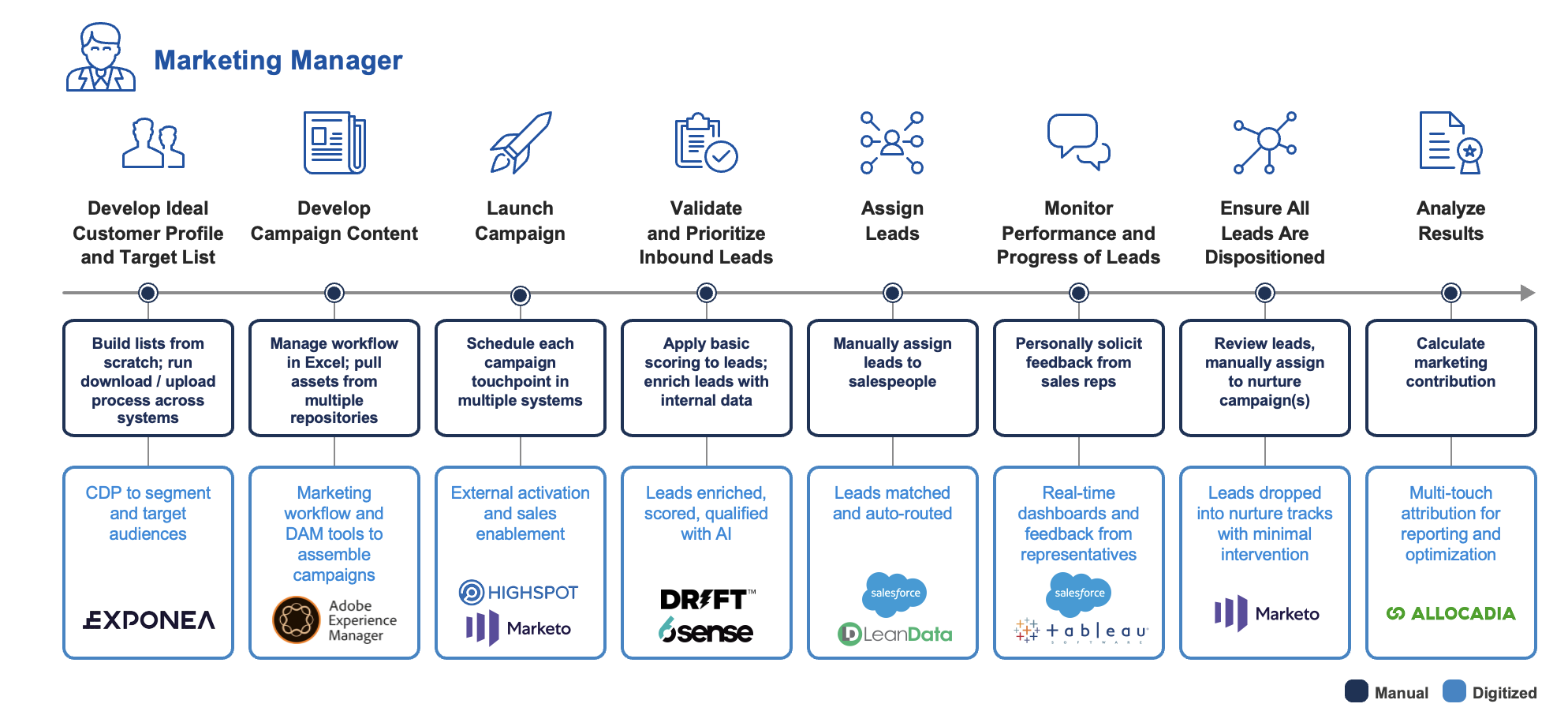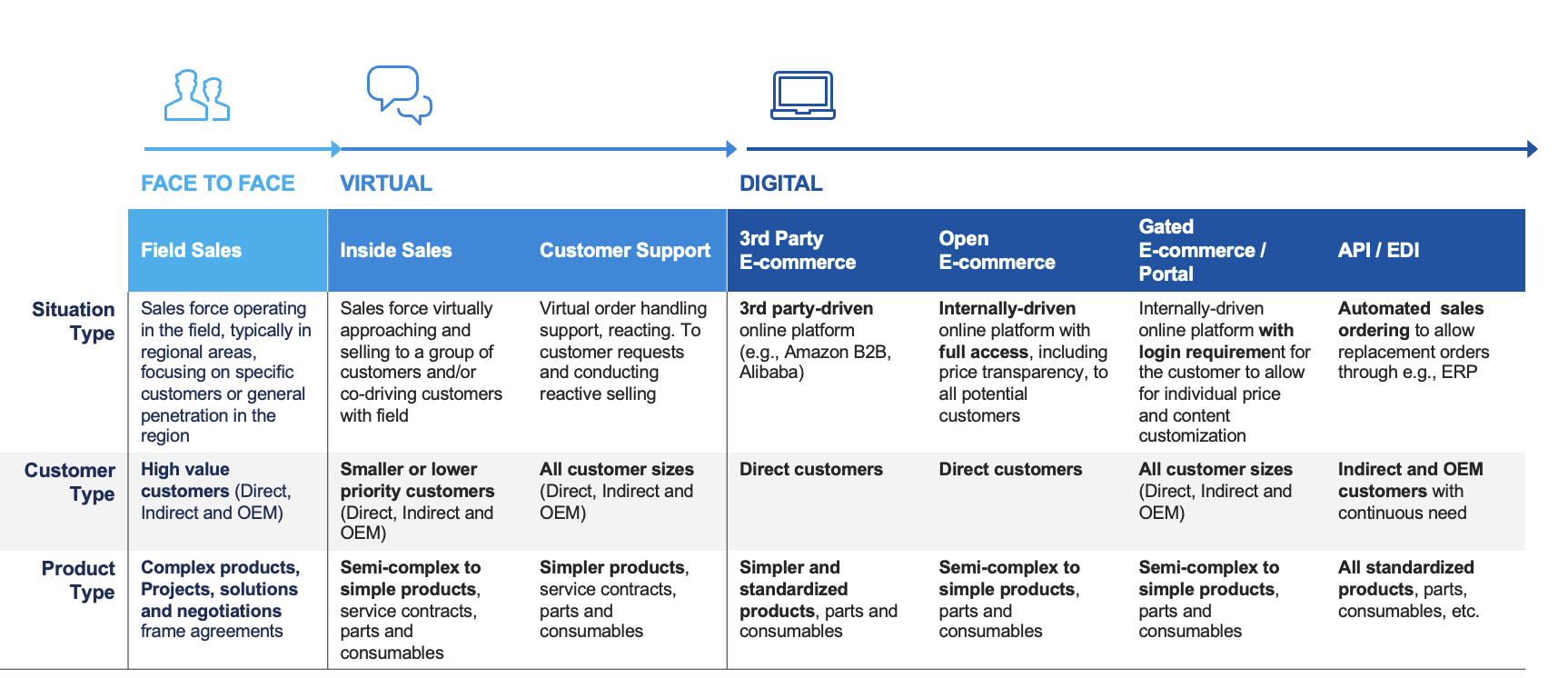The state of B2B sales and marketing
How to transition from field to virtual sales and marketing
The transition from field to virtual sales involves a high degree of adaptation to the current sales force structure and their work habits:
- Power shift, such as changes in account and deal responsibility
- Shift in the sale process from physical and phone to virtual and digital (Covid-19 example)
- Shifts in privileges, such as changes in specific work benefits (company car, mileage money, corporate travels etc.)
Aside from the required adaptations in the work force and despite the rapid growth of options and capabilities in tech stack, many sales reps still navigate the sales cycle in a manual, time-intensive way.
Incorporating the right “tools” can make the day-to-day tasks and overall lives of sales reps much easier. The same principle applies to marketers; digital tools can significantly enhance marketing efficiency and marketing ROI.


Virtual Sales are here to stay.
Covid has significantly influenced the shift from field to virtual sales, but in a post-covid era the benefits of virtual selling are too obvious to be ignored. In fact, approximately 90% of buyers are still interacting with sales reps virtually since COVID-19.
There is no ‘one size fits all’ approach
The use of digital vs. virtual vs. field should be tailored, based on factors such as customer segment and product types.

Today most companies do not have the right capabilities to cope with the fast growth in B2B E-commerce.

5 Key enablers for successful B2B digital transformations

Related Insights.








